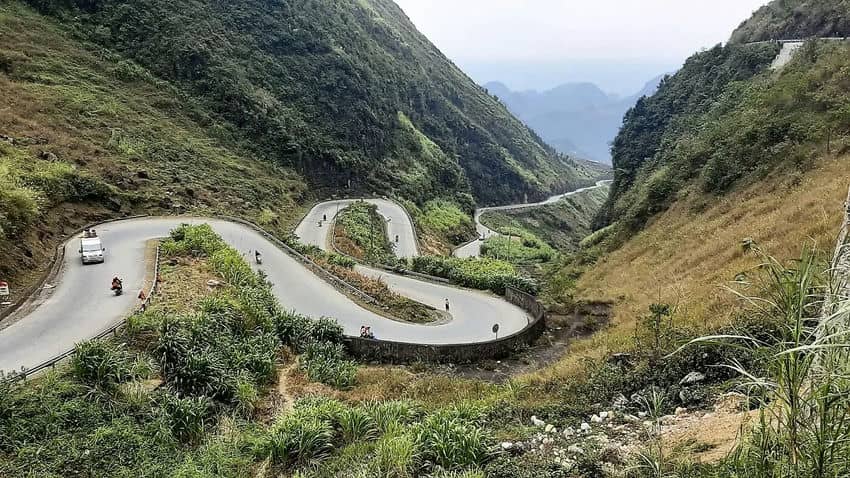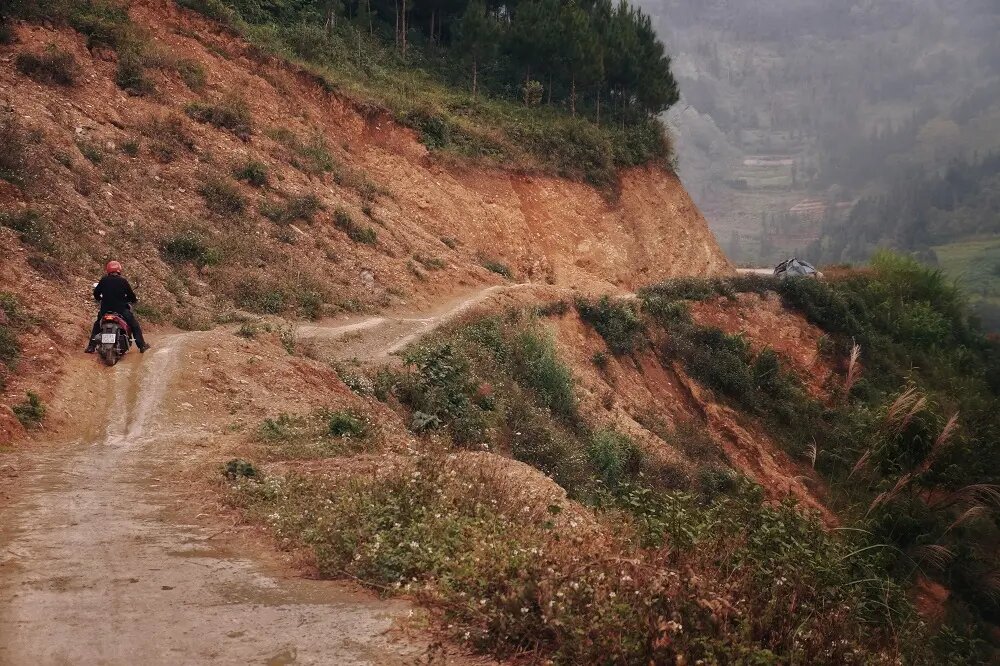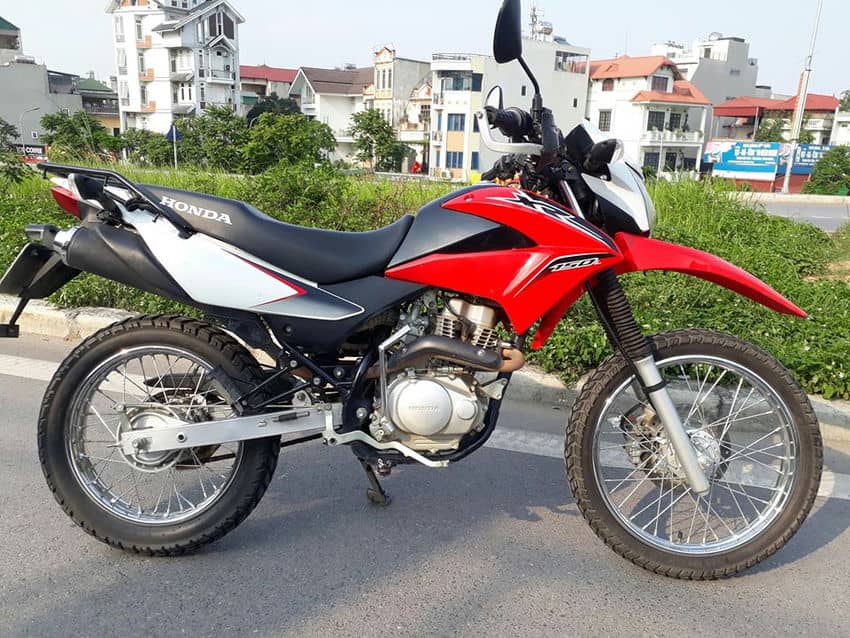Ha Giang Loop All You Need to Know
What is the Ha Giang Loop?
The Ha Giang Loop is a circuit located in the North of Vietnam, generally covering a loop of almost 400 kilometers that starts and ends in the city of Ha Giang (itself located in the province of Ha Giang). To put it simply, you rent a motorcycle in the major city, spend several days on mountain roads just a few kilometers from China, and visit well-known and stunning places like the Dong Van Market or the Ma Pi Leng Pass. This loop can also be integrated into a larger circuit in Northern Vietnam, including the addition of Cao Bang or Ba Be Lake, but in this article we’re just covering the Northern Loop. If you’re interested in the Ha Giang Adventure Route (that includes Cao Bang) read all about it here.

Is the Ha Giang Loop safe for beginners?
Short answer is: No, do not embark on the loop if you have never ridden a scooter or motorcycle. After all, the Ha Giang loop covers 400 kilometers of mountainous roads, there are hundreds of curves with limited visibility, massive ascents, steep descents. We’re not saying that to scare you though, you shouldn’t be afraid but rather cautious. Just to be safe you can opt for an easy rider.

Accidents don’t just happen to others
An important thing to remember, especially if you are young and carefree, accidents don't only happen to others, and you don't want to end your vacation in Vietnam on a tragic note. We’ve seen foreigners who had just had an accident; they seemed in shock, blood on their shoulders. In short, it happens much more often than we think, especially for those who have never ridden a scooter or those who let their guards down.
It is imperative to ride with caution, especially in the rain. We don't recommend doing this trip on an automatic scooter; at least a semi-automatic is important to be able to drive safely.
The road conditions

The stretch between Ha Giang and Meo Vac via Dong Van, on QL34:
QL34 is the main road from Ha Giang to Meo Vac, and this road is in excellent condition throughout. There are, of course, plenty of dangerous curves (especially in Quan Ba), areas with limited visibility, and sometimes a few rocks, but overall, the road is in great condition. So, you can brake in a curve without losing traction on the front wheel, there aren’t big potholes everywhere. The only less well-maintained section is the few kilometers shortly after the village of Can Ty.
The Meo Vac to Du Gia section, on DT182 & DT176:
We leave QL34 and switch to the departmental roads. You immediately feel the difference as the road is not in very good condition. It's still manageable, but you need to be careful throughout DT182; there might be gravel in a turn, a large pothole, typical Asian road conditions, so be cautious.
After turning onto DT176, the road is somewhat similar but in better condition until Du Gia. Once you pass the village of Mau Due, look around you and take in all the scenery because it's amazing.
The Du Gia to Quan Ba section, on DT182:
Leaving Du Gia, you'll backtrack to the first real intersection. At this point, you'll return to DT182 to reach Quan Ba (where the Heaven’s Gate is located). This part of the road is in really poor condition for at least 50% of the way (I'm only talking about DT182). Once past the first major pass, the road is in better condition, but still, be careful. After that, once you’re back on QL34 in Quan Ba, it's smooth sailing.
Ha Giang motorbike rentals
There are many motorbike rental shops in Ha Giang, you can literally walk outside and find one. Regarding motorcycle rental prices, it depends on the model of the bike, but it's about $10 for a well-maintained semi-automatic 125cc. You can rent additional equipment, but most of the time, the motorbikes come with racks at the back (to easily hold your bags, bungee cords are provided), a map and a large plastic cover to protect your belongings – in short, it's well-organized. It's also completely possible to do the Ha Giang loop with an Easy Rider, meaning being on the back of a motorcycle with a local driver in front.
If you didn’t know already, we also provide motorbike rentals. As one of the best travel agencies and tour operators in Vietnam, specializing in motorbike tours, especially in Ha Giang and its surroundings, we want our guests to enjoy a real “experience of the lifetime", and we stand by what we say. So if you haven’t decided on a rental place, contact us:
Tel : 0866 19 68 78
Email : info@hagiang-motorbike-tours.com

Ha Giang Loop tour
Here’s a recommended Ha Giang Loop Itinerary. It takes at least 2 days to be able to do the Loop, and 7 days should be more enough. However, you can do the Ha Giang Loop at your own pace of course. Important note: Don't rely on what Google Maps says about travel times; in reality, it takes much longer. We need multiple stops to eat (yes, it's necessary!), for coffee, for a photo – in short, the timings we provide below are realistic.
We've differentiated the time spent on the road and the time spent visiting because sometimes you spend 6 hours on the motorcycle, but you're actually out visiting from 7 am to 5 pm.
Day 1: Ha Giang to Dong Van: 144 kilometers – 8 hours and 45 minutes on the road (departure at 7:45 am, arrival at 4:30 pm).
Day 2: Dong Van – Meo Vac – Lung Cu – Ma Pi Leng: 106 kilometers – approximately 5 hours on the road (I estimate because I'm having trouble finding the exact timings in the photos). Start of the day at 6:30 am, end of the day at 5:05 pm.
Day 3: Ma Pi Leng – Meo Vac – Lung Phin – Du Gia: 81.3 kilometers – 6 hours and 20 minutes on the road. Start of the day at 6:55 am, end of the day at 5:20 pm. The journey between Ma Pi Leng and Du Gia takes 6 hours and 20 minutes (arriving in Du Gia at 1:15 pm).
Day 4: Du Gia – Ha Giang: 113 kilometers – 5 hours and 20 minutes on the road. Start of the day at 7:30 am, arrive in Ha Giang at 3:10 pm.
We’ve also made other Ha Giang Loop Itineraries, so make sure to check them out too!
=> Ha Giang Loop: 5 Day Itinerary




.jpg)


